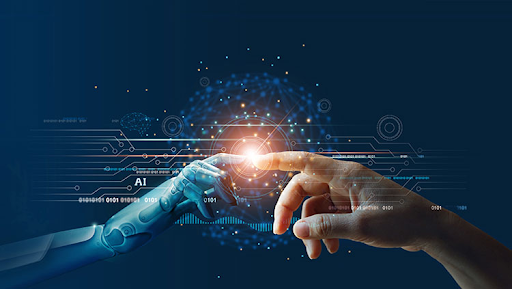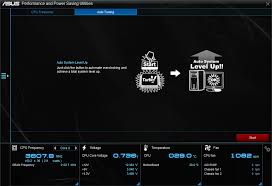
Many deep learning frameworks are used in industry. Here's a list of some of the most commonly used deep learning frameworks in industry. TensorFlow is one of the most popular frameworks for building deep learning models. Many popular companies use it. It is free, open-source, and completely free. There are many other alternatives. There are many others. All deep learning frameworks are different. If you are trying to train a specific type or model for a particular application, it is not a good idea to use a framework designed for general AI.
TensorFlow
TensorFlow is an open-source Python library that allows you to create and run deep learning models. It is based on the idea graphs. It allows graphs to be stored and managed in a data set, which makes it easier for developers to use both GPUs or CPUs. Deep learning models typically use large amounts data, so it is helpful to store it in a data frame.
TensorFlow's main purpose is large-scale distributed training. It is modular and easy to transfer models between processors. The TensorFlow framework also comes with a visual monitoring system, called the TensorBoard. TensorFlow can be used to optimize and test new models.

PyTorch
In the last few years, deep learning has allowed for breakthroughs in understanding natural languages. NLP models tend to treat language as a series of words and phrases. Recursive networks, however, take into account the structure of language. PyTorch can help with this task. However, recursive neuro networks are notoriously hard to implement and maintain. Salesforce uses this framework to create natural language processing models.
PyTorch users can modify the code using tensors. Tensors are very similar to NumPyArrays. Tensors, which are three-dimensional arrays, can be used on the GPU for faster computation. Tensors make it possible to write machine-learning algorithms that combine multiple tensors. PyTorch speeds up learning by storing model parameters or inputs in Tensors.
SciKit-Learn
SciKit-Learn deep-learning libraries are a set Python libraries that support data analysis, machine learning, and more. The library supports both unsupervised and supervised data mining algorithms, as well. The framework also offers support for feature extraction and model testing on new data. SciKitLearn offers a simple-to-use and open-source environment, which makes deep learning more accessible. This allows you to refine your model along the way, unlike other frameworks.
The library comes with standard datasets for classification and regression tasks. Although some of the datasets may not be representative of real-world situations they can still be useful for demonstration purposes. For example, the diabetes dataset can be used to measure disease progression. The iris plant dataset can be used for pattern recognition. The scikit-learn Library also has information about how to load data from external sources. You can also find sample generators to help you with tasks such as decomposition or multiclass classification.

Caffe
The Caffe deep learning framework is an open source, C++-based neural network software that is designed to improve the performance of machine learning applications. This software was developed by the University of California at Berkeley. It is free and open-source. The Python interface makes it easy to integrate into applications. It was created for deep learning but can also work in other areas. The framework can accept a variety input formats, including JSON. It can also learn new data structure.
It can be integrated into your software easily and supports CPU mode. This eliminates the need for a specialized hardware platform, and lowers relearning costs. The framework is open-source, and the documentation is extensive. The framework is open source, which means anyone can contribute to its development. It also includes references for various deep-learning algorithms. Caffe also has a good community behind it. It is widely used in the U.S. as well as abroad.
FAQ
How will AI affect your job?
AI will replace certain jobs. This includes drivers of trucks, taxi drivers, cashiers and fast food workers.
AI will create new jobs. This includes positions such as data scientists, project managers and product designers, as well as marketing specialists.
AI will make current jobs easier. This applies to accountants, lawyers and doctors as well as teachers, nurses, engineers, and teachers.
AI will improve the efficiency of existing jobs. This includes salespeople, customer support agents, and call center agents.
What is the newest AI invention?
Deep Learning is the most recent AI invention. Deep learning is an artificial intelligent technique that uses neural networking (a type if machine learning) to perform tasks like speech recognition, image recognition and translation as well as natural language processing. Google created it in 2012.
Google recently used deep learning to create an algorithm that can write its code. This was done with "Google Brain", a neural system that was trained using massive amounts of data taken from YouTube videos.
This allowed the system's ability to write programs by itself.
IBM announced in 2015 that it had developed a program for creating music. The neural networks also play a role in music creation. These are sometimes called NNFM or neural networks for music.
What does the future hold for AI?
The future of artificial intelligent (AI), however, is not in creating machines that are smarter then us, but in creating systems which learn from experience and improve over time.
In other words, we need to build machines that learn how to learn.
This would allow for the development of algorithms that can teach one another by example.
You should also think about the possibility of creating your own learning algorithms.
You must ensure they can adapt to any situation.
AI is good or bad?
AI can be viewed both positively and negatively. On the positive side, it allows us to do things faster than ever before. Programming programs that can perform word processing and spreadsheets is now much easier than ever. Instead, instead we ask our computers how to do these tasks.
On the negative side, people fear that AI will replace humans. Many people believe that robots will become more intelligent than their creators. This could lead to robots taking over jobs.
Statistics
- That's as many of us that have been in that AI space would say, it's about 70 or 80 percent of the work. (finra.org)
- By using BrainBox AI, commercial buildings can reduce total energy costs by 25% and improves occupant comfort by 60%. (analyticsinsight.net)
- In the first half of 2017, the company discovered and banned 300,000 terrorist-linked accounts, 95 percent of which were found by non-human, artificially intelligent machines. (builtin.com)
- According to the company's website, more than 800 financial firms use AlphaSense, including some Fortune 500 corporations. (builtin.com)
- The company's AI team trained an image recognition model to 85 percent accuracy using billions of public Instagram photos tagged with hashtags. (builtin.com)
External Links
How To
How to create an AI program
Basic programming skills are required in order to build an AI program. There are many programming languages to choose from, but Python is our preferred choice because of its simplicity and the abundance of online resources, like YouTube videos, courses and tutorials.
Here's a quick tutorial on how to set up a basic project called 'Hello World'.
You will first need to create a new file. This can be done using Ctrl+N (Windows) or Command+N (Macs).
Next, type hello world into this box. To save the file, press Enter.
To run the program, press F5
The program should say "Hello World!"
This is only the beginning. If you want to make a more advanced program, check out these tutorials.